today i am keeping things short and sweet, as i anticipate i will be writing again soon on my flight back to new york. i was recently informed of glow recipe by their subway ads that i see everywhere. the chief merchandising officer at ulta beauty said “skin care is now the strongest category for tweens, even ahead of makeup. “gen z as well as the alphas are getting into skin care earlier than other generations.” while i am not as familiar with glow recipe or bubble, when i was a teenager, i remember all the rage around drunk elephant. in 2015, drunk elephant peaked, launching at sephora and becoming the retailer's fastest-growing seller that year.
these days, the sephora children1 have like a billion options for makeup and skincare that they can force their moms to buy for them. while lots of news sources seem surprised by this “recent” phenomenon, teenagers being into skincare has been happening for a long time: “tweens covet $24 colorful lip masks from laneige, $29 fruity face mists from glow recipe, $62 whipped moisturizers from drunk elephant and $28 cooling water serums from milk.” drunk elephant will always be the OG in my eyes for building an empire in teenage skincare, but let’s see why companies like bubble have been doing so well.
what is bubble? bubble is the “first” skincare brand created for young skin that is science-driven, non-toxic, and plant-based. (i have a hard time believing this pitch, but anyway) bubble was launched in november 2020, and has seen insane growth since. bubble is literally having teenagers be literal influencers: “bubble has become a cultural phenomenon for young girls across the country, and has converted many into fierce advocates of the brand. bubble’s ambassador program has 2,000 tweens enrolled to test products and post about the brand online. the 13- and 14-year-olds earn commission on referred purchases.” arguably, teenagers are always influencing each other, so in my eyes this is a genius approach to building hype and awareness. the pressure into buying drunk elephant was undeniable in 2015. bubble is recreating a similar sensation but with a super accessible price point, while drunk elephant is outrageously priced but still has teenagers hooked.
why is bubble doing so well?
listen to the sephora children. they are powerful. - “everything we do is 100% driven by our community,” the founder of bubble said. “we have conversations with our community daily on a chat. whatever they want to create, we test and if it doesn’t have a 90% acceptance rate, we won’t launch the formulation.”
create social media buzz - “for us, 13-and-up is a massive part of our community and audience,” eisenman told wsj. “they test the products with their friends, they let them try it and share it. you don’t see that kind of testing and sharing amongst adults.” creating a referred purchasing system for teenagers is something i never thought i would see happen, but here we are. its already an organic process that teenagers engage in, so bubble is strategically placing their product in front of the right crowd.
make price point your differentiator - arguably, the most important factor here would be the price point. pricing for bubble is way more accessible than drunk elephant, with most of their products under $20. that is crazy. one product at drunk elephant runs you 45+ dollars, and leaves your mom really mad at you for making her spend that much. this is a game changer for teenagers around the world — making it an affordable option for gen z and younger consumers who may not have high disposable income but are still looking to buy skincare because their friends are.
these are all of my thoughts as of late. thank you all so much for reading all of my thoughts and finding them interesting enough to read past the first sentence. i am about to hit 500 subscribers and this is huge! i promise there will be a longer edition coming soon, as i plan to take a field trip to erewhon this weekend.
as a side note - if you have startups and companies you are curious about, let me know in the comments. i often times stumble into things organically but i would love to hear suggestions!
📚 what i have been reading lately, linked here for you:
bullish’s early investment into bubble
a piece by forbes on bubble’s success
this is a term coined by my friend, nina. but it still applies.


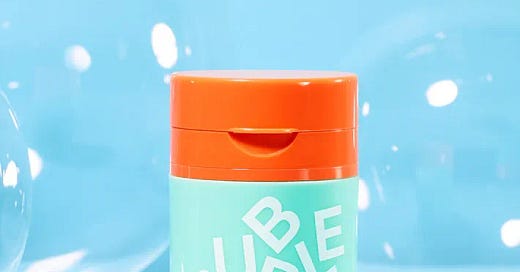


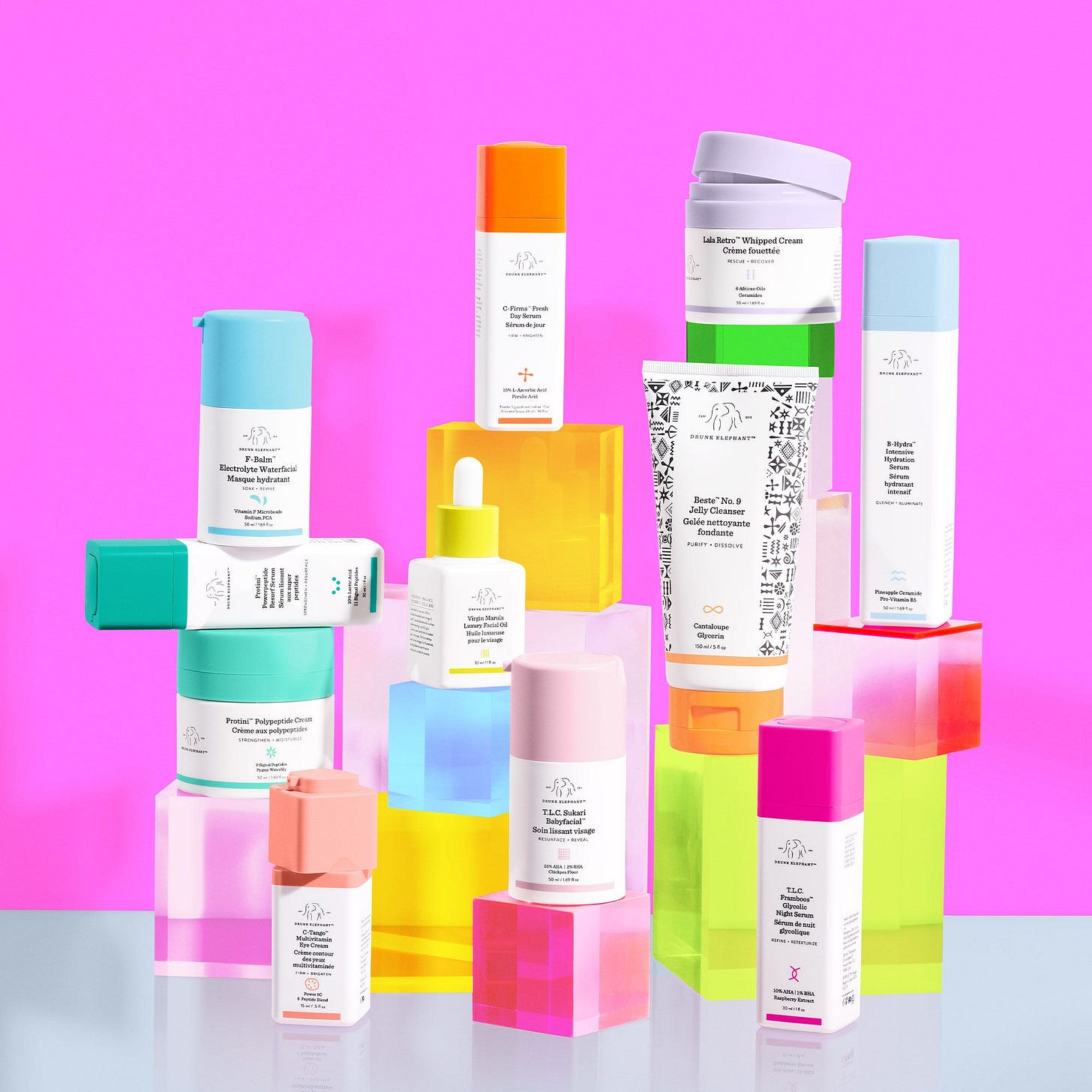
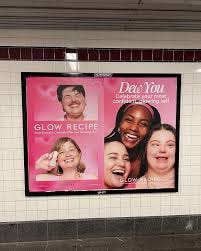
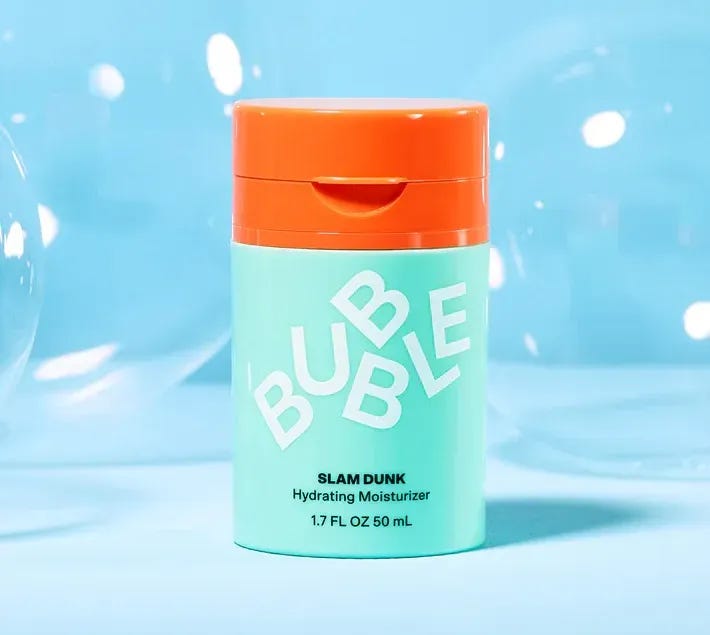

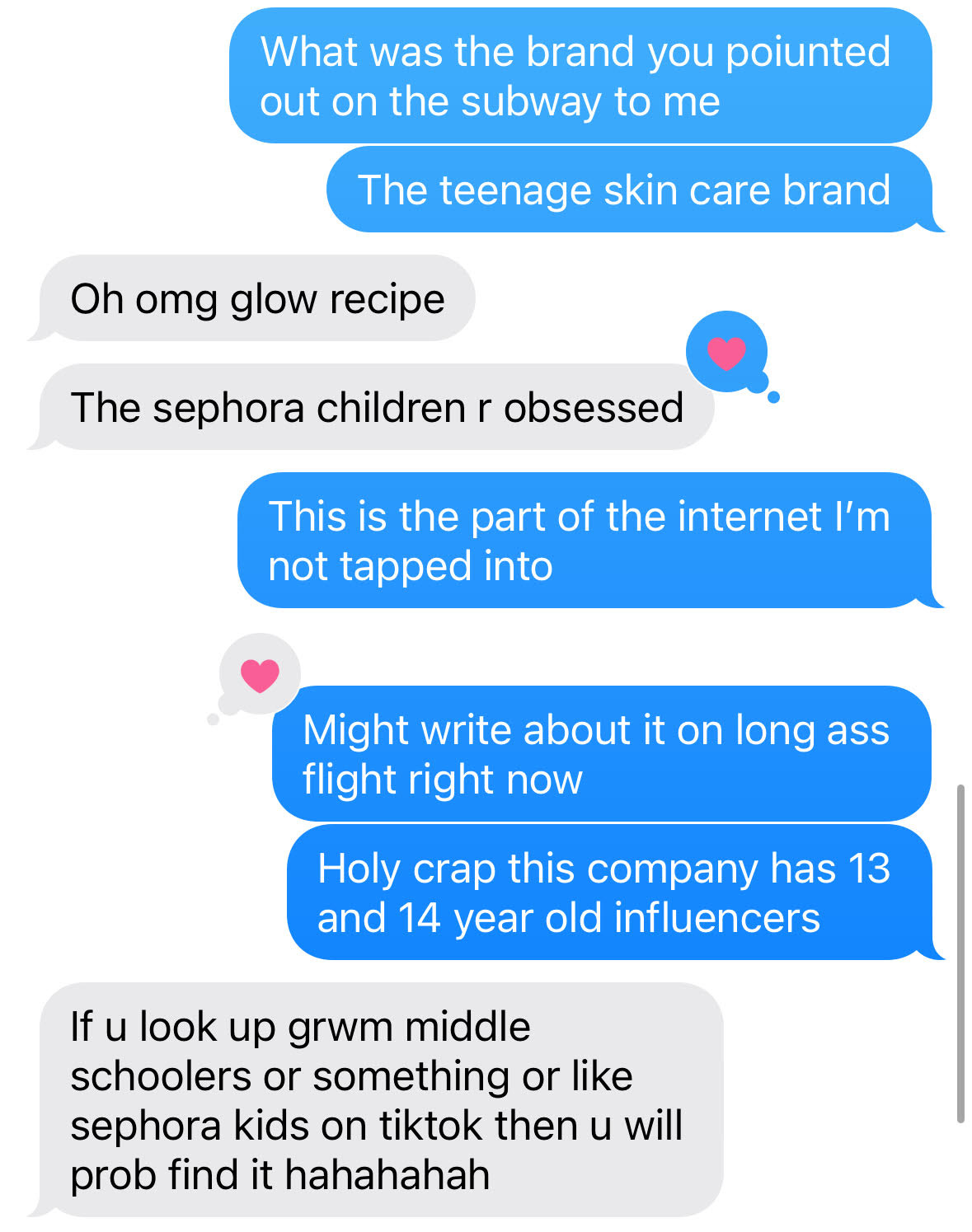
My question is what happens to the brand once all their brand ambassador's "grow up"? Will the brand grow with them, or will they have to let go of their original influencers and take on new ones to continue to market to the younger generation?
Interesting read! Always love your take!